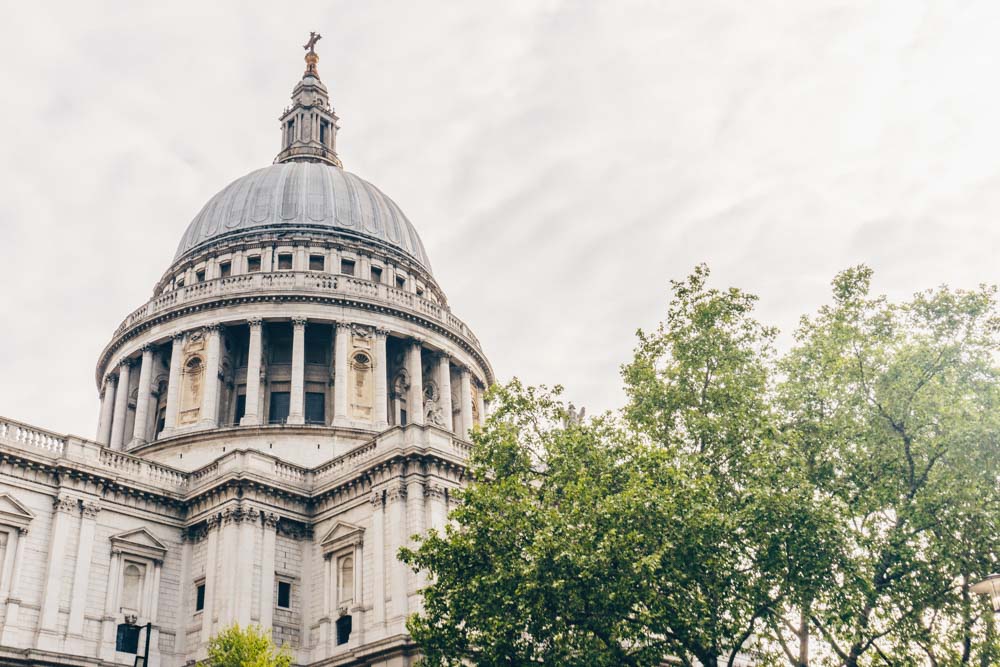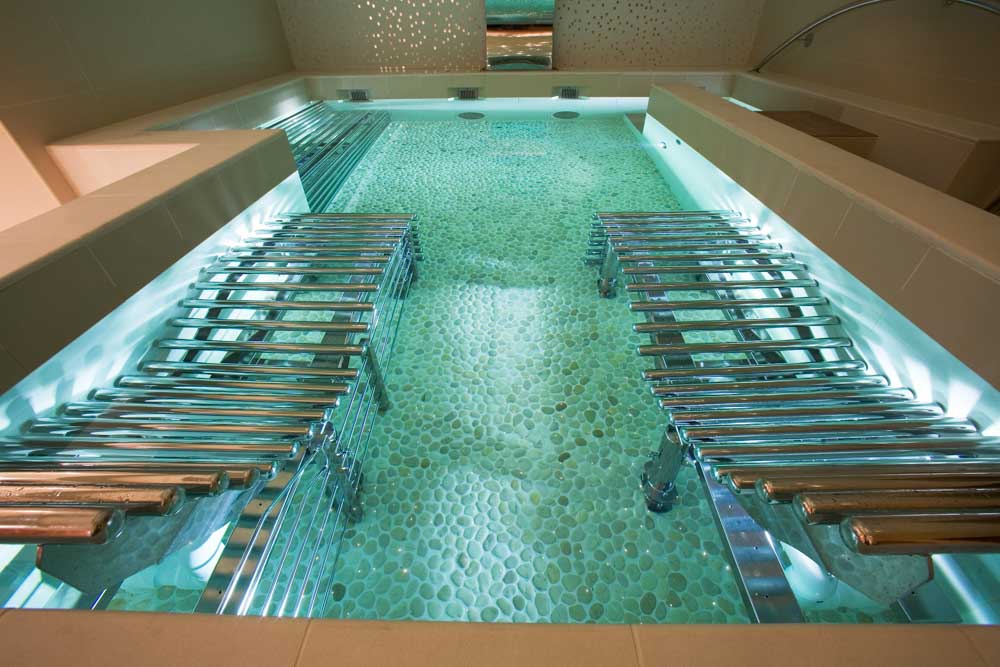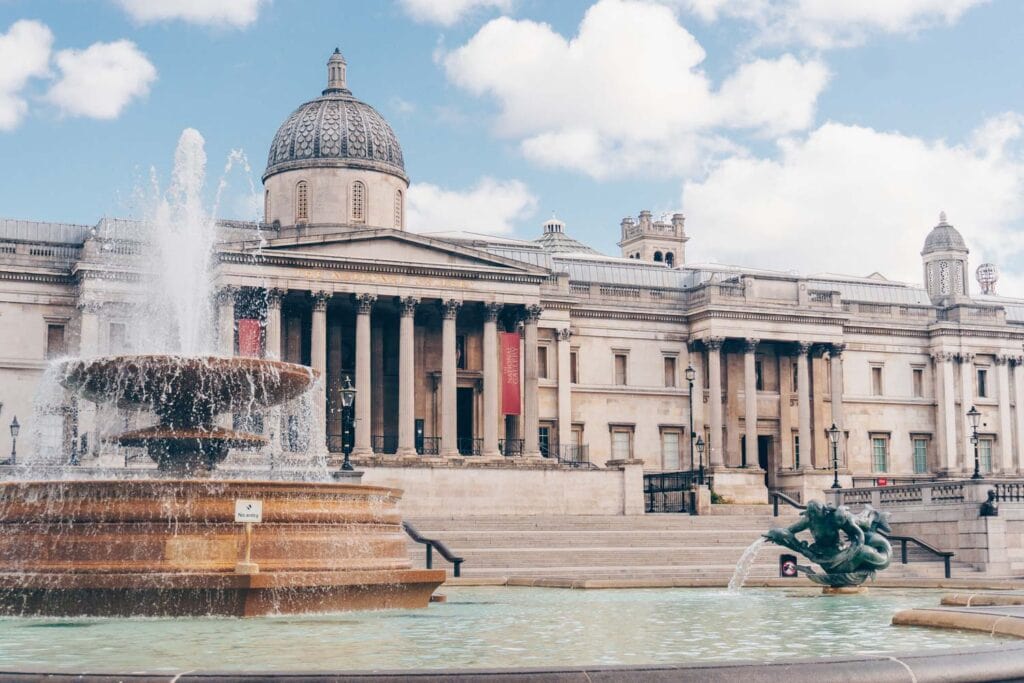Discover some of the best Christopher Wren buildings in London. We’re hunting down a few of London’s greatest buildings, and the man who designed them.
Few people have had quite the impact on London’s architectural landscape as Sir Christopher Wren. Born in 1632, he lived through the Great Fire and would go on to rebuild much of London’s most impressive buildings after the incident.
Much of his work can still be found today. We’ve put 12 of our favourites into this guide so you can begin your hunt for the work of one of London’s most important figures.
Who Was Christopher Wren?
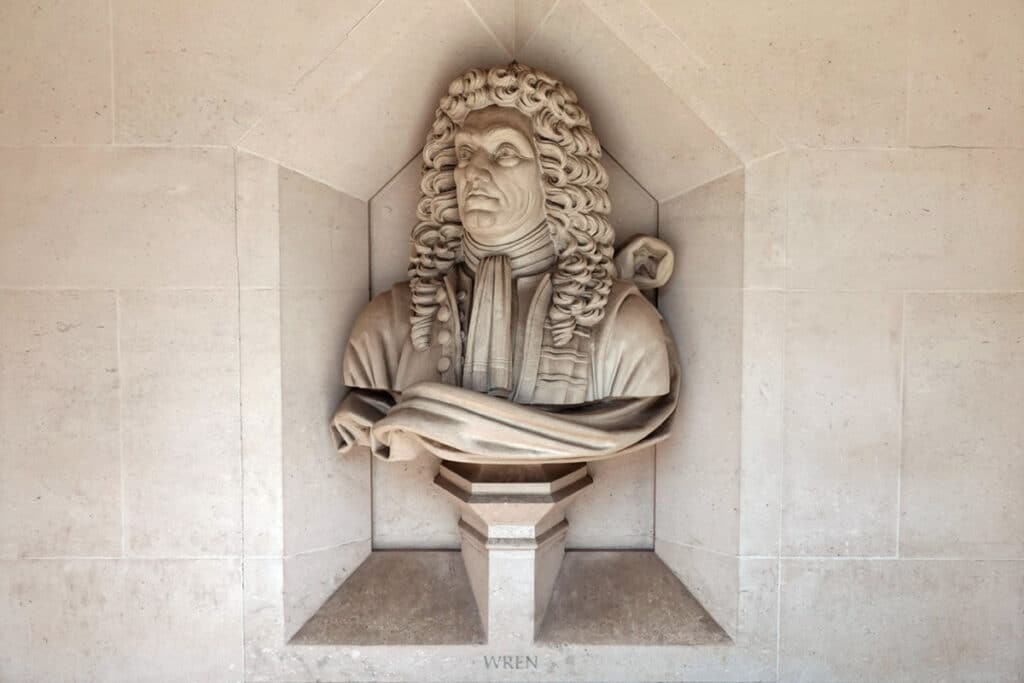
Christopher Wren, or to use his full title, Sir Christopher Wren, was an English architect and man of many talents.
Apart from designing London’s most famous cathedral he also designed 51 churches, a number of palaces, most of the old, cool stuff in Greenwich, and other notable buildings around London.
But it doesn’t stop there. He was also a respected scientist whose work was praised by none other than Isaac Newton, founder of The Royal Society, and recipient of a knighthood.
That’s what you call a renaissance man.
Famous Christopher Wren Buildings in London
St. Pauls
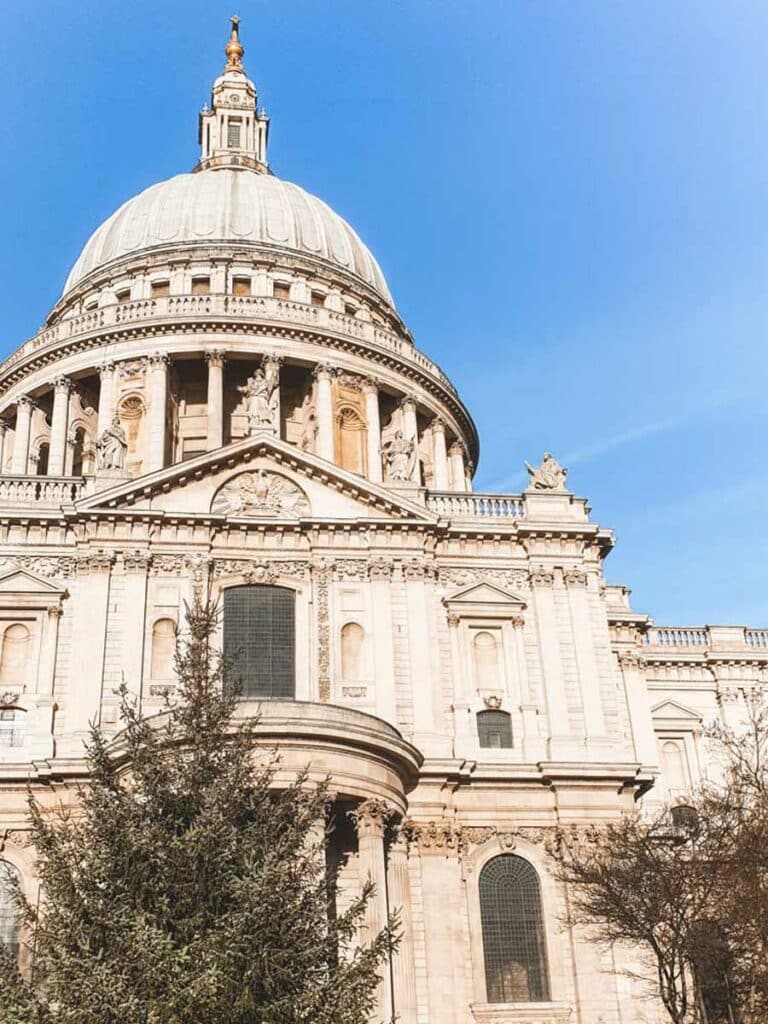
Obviously the most iconic of all Wren’s, and arguably London’s, buildings, St Pauls is the crown jewel of our man’s catalogue.
Though the dome is now towered over by the big glass boxes in the City, it was for a long time the tallest building in London, and could be seen for miles around.
The cathedral took 35 years to complete and was finished in 1710. It was commissioned to replace a church that stood in its place until it was burnt down by the Great Fire of London.
Wren’s St. Pauls was close to following its predecessor during the Blitz when a timed bomb fell through its roof. The bomb was defused but had it gone off would have almost certainly brought the cathedral down with it.
You can visit St Pauls and check out its wild baroque designs from the inside. You can enter for free during the evensong service where you can also catch some angelic choir music that really sets the scene.
You’ll also find some pretty notable folk buried In the crypt below.
Chelsea Royal Hospital
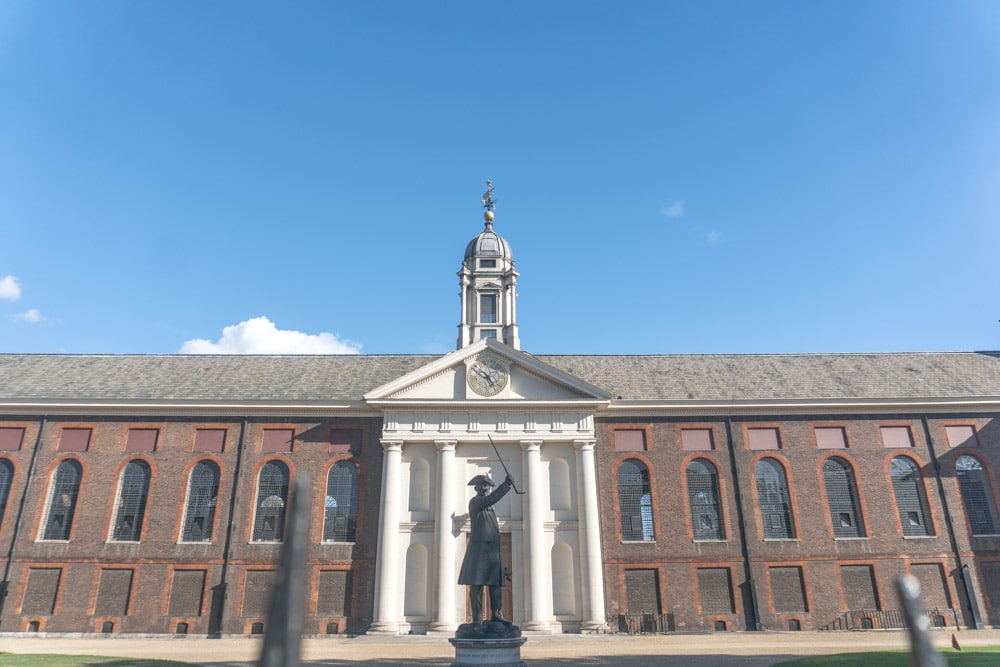
Though the Chelsea Royal building is known as a hospital, its actual function was as a retirement home for veterans of the British Army. It was commissioned by none other than King Charles the 2nd.
Though it’s been added to over the years, the main buildings are all the work of the man in question.
Notable parts of his design are the Great Hall and the Chapel, two great examples of Wren’s eye for the baroque, and creating grand religious spaces. We say religious, but the Great Hall is actually where dinner is served. Eating in a hall like this could come pretty close to a religious experience though.
Chelsea Royal Hospital is still actually used in its original function. If you’re paying a visit or walking around the area you might run into some of the famed Chelsea pensioners – these are the veterans that live here.
Hampton Court Palace
Hampton
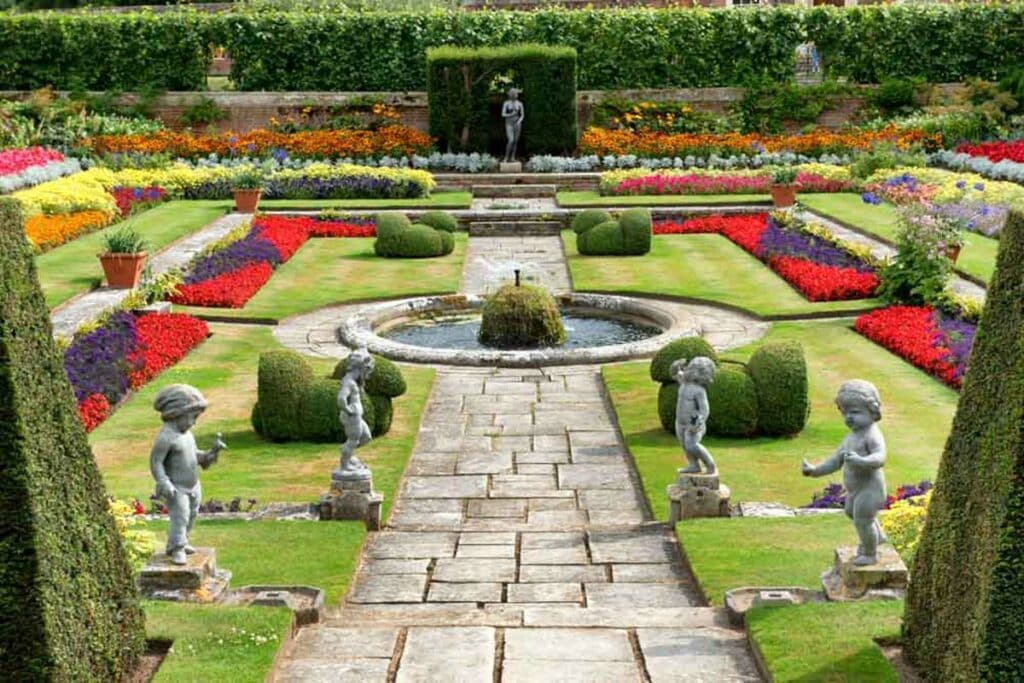
Not content with just designing houses for God, Wren also put his hand to plans for several palaces. One of those was the palace at Hampton Court.
The monarchy had owned a palace in Hampton for hundreds of years before Wren came along but it was Wren that was put in charge of giving the place a makeover.
The story goes that Wren’s royal patron King Charles the 2nd had caught wind of the grandeur of the French King’s palace at Versaille and began worrying that his own Tudor palace wasn’t befitting a man of his stature.
He ordered Wren to design him a new one in the baroque style that was so popular in Europe at the time, and which Wren had sort of mastered. You can still go and see the grand results of Charles’ FOMO today.
Greenwich Observatory
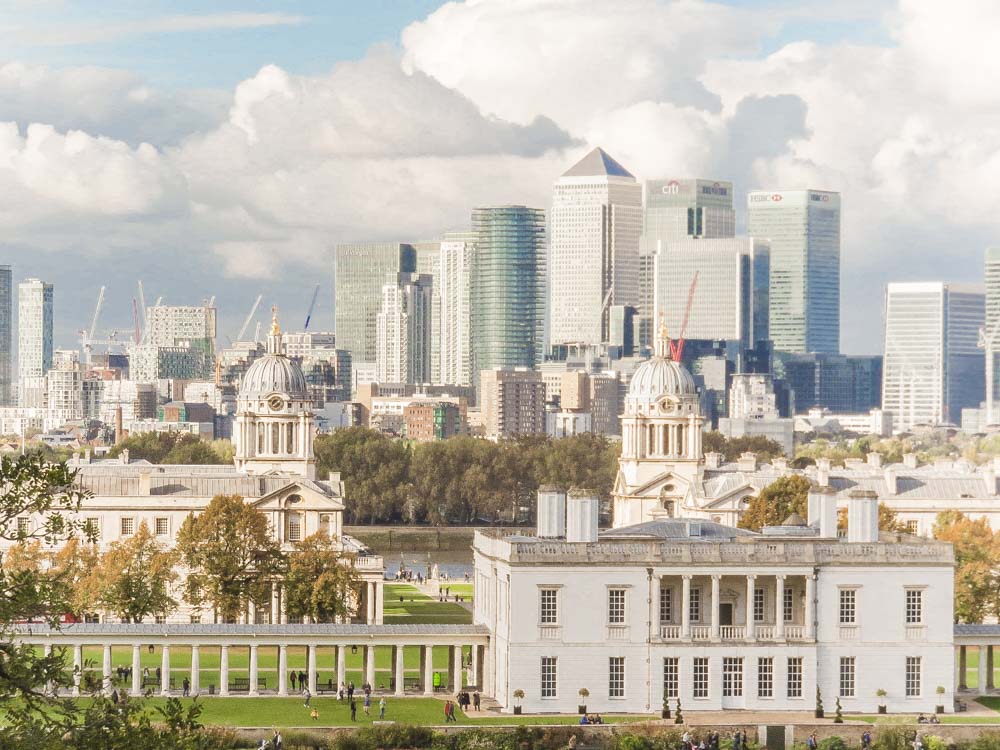
Wren loved his science. He was around for what was known as the Scientific Revolution, an age of great discoveries and grounded, rational thinking. Many of the discoveries of the age were to do with astrology and the study of space.
Wren’s hand is not absent from that. He was put in charge of designing the Greenwich observatory. The site is also scientifically important as the place where the time zones are measured from – as in Greenwich mean time.
Today you can go and visit Greenwich Observatory and take a look around. You can get a close look at the architectural flare of the man from the outside, then head indoors for a show at the planetarium (not that Wren had any hand in that – though we think he’d have liked it).
Monument to the Great Fire of London
Monument
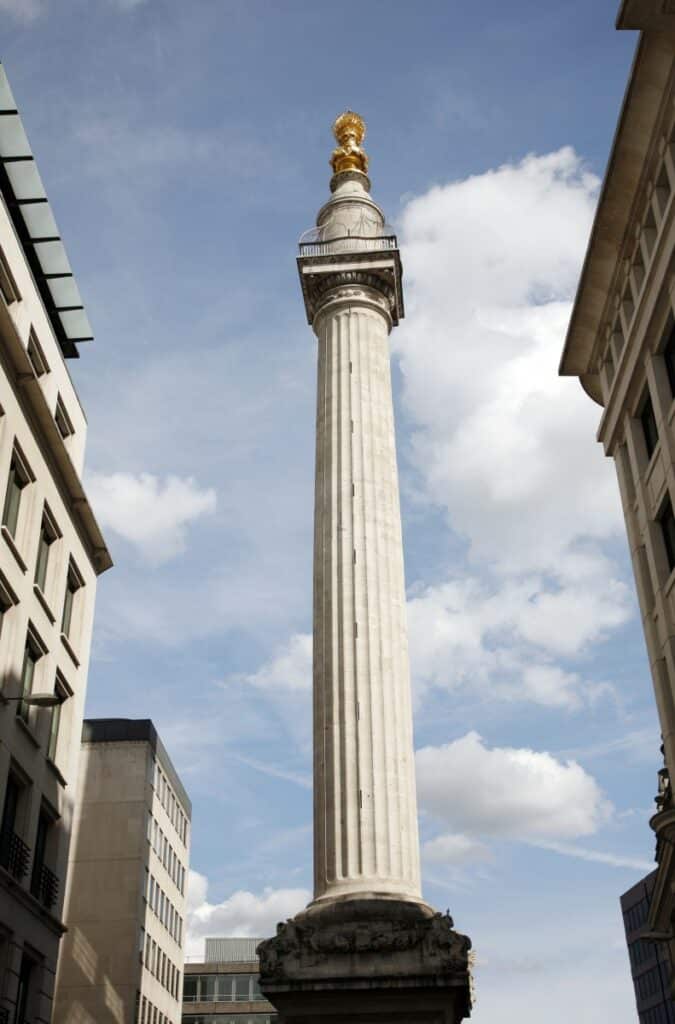
Ok so this one isn’t exactly a building, but it is an iconic London structure. It also gives a name to the area it was built in. Take a tube to Monument Station and you’ll find it right by one of the exits.
The monument was built to commemorate the Great Fire of London and was finished in 1677. It was built on the site of the first church to be burnt down by the fire and is 202 metres west of where the fire started on Pudding Lane.
Just so you can show off to your friends: The Monument to the Great Fire of London is 62 metres high and built in fluted Doric style. You can thank us later.
Marlborough House
St. James’
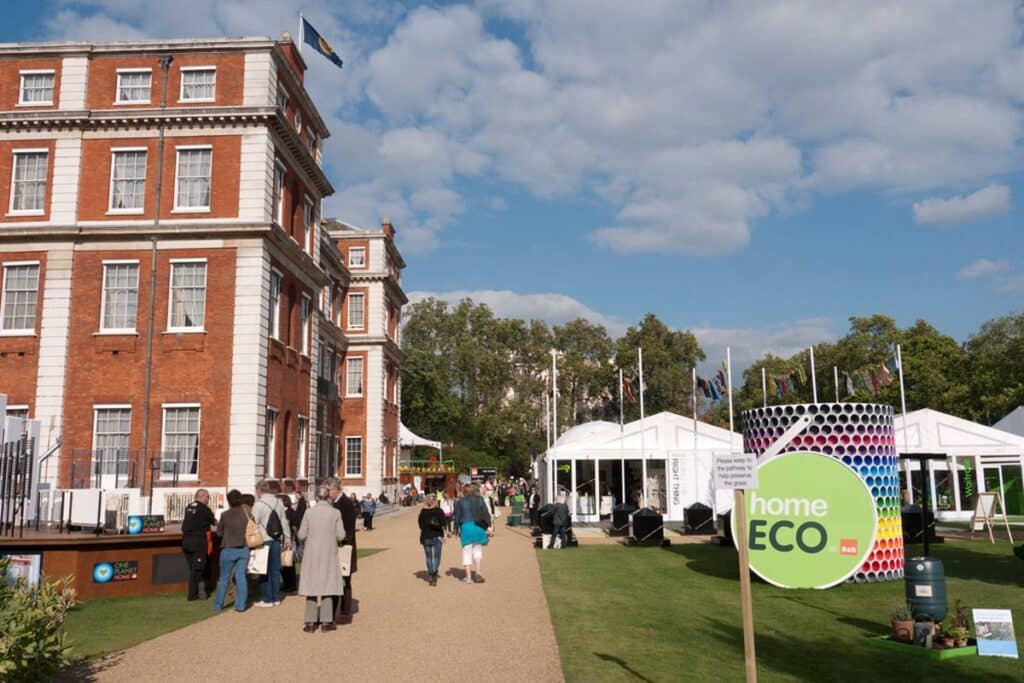
One of Wren’s later projects was to design a house for the Duke of Marlborough. By this time, Sir Chris was getting on a bit – he would have been in his late 70s – and was working a lot with his son.
The duo designed a beautiful mansion that was unusual for its time and has a pretty funny end to its story. The plan they had was to use red brick and white cornerstones to create a bold contrast in colours.
The project got underway but both father and son got the sack when the Duchess of the estate got testy about the progress being made on construction. The building did get finished eventually and can still be seen in all that groundbreaking glory.
Marlborough House is now the international HQ of the Commonwealth.
St. Martin’s Church
Ludgate
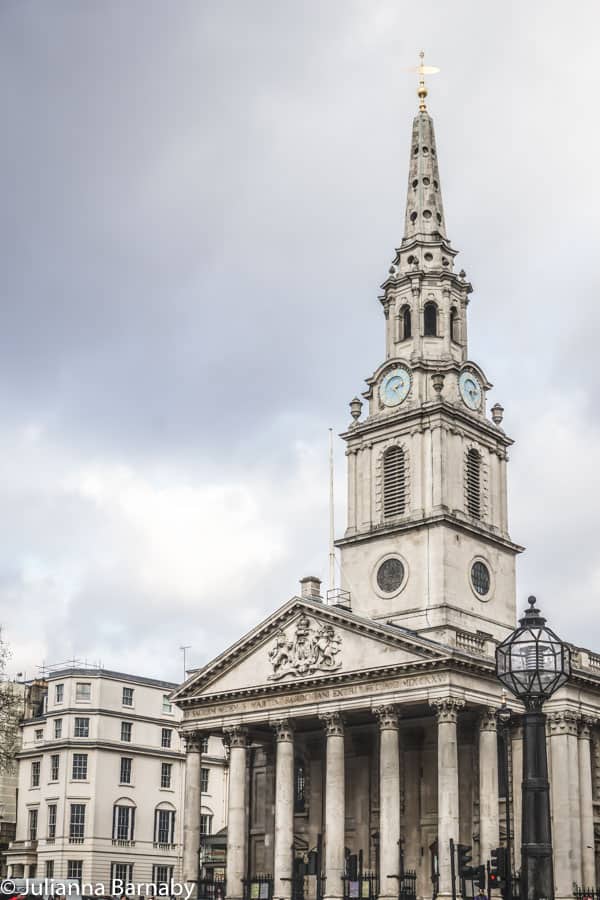
Wren was the master of churches. This is partly to do with his love of the baroque and partly to do with the fact he was active during a time of great rebuilding in London – the years after the Great Fire.
This church tells a story that’s true to much of the churches of London, and can be found on the rise of Ludgate Hill, situating it perfectly to drop in on a trip to St. Pauls so that you can tick off two Christopher Wren buildings in quick succession.
The site has been home to a church since gawd knows when, though an early date for burials there cites King Cadwallon, King of the Britons being buried there in the year 677.
It was rebuilt by Wren after the Great Fire wiped the original, and was damaged during the Blitz – but survived to this day.
Oh, and the view from the steeple is pretty amazing if you can get up there.
St Clement Danes
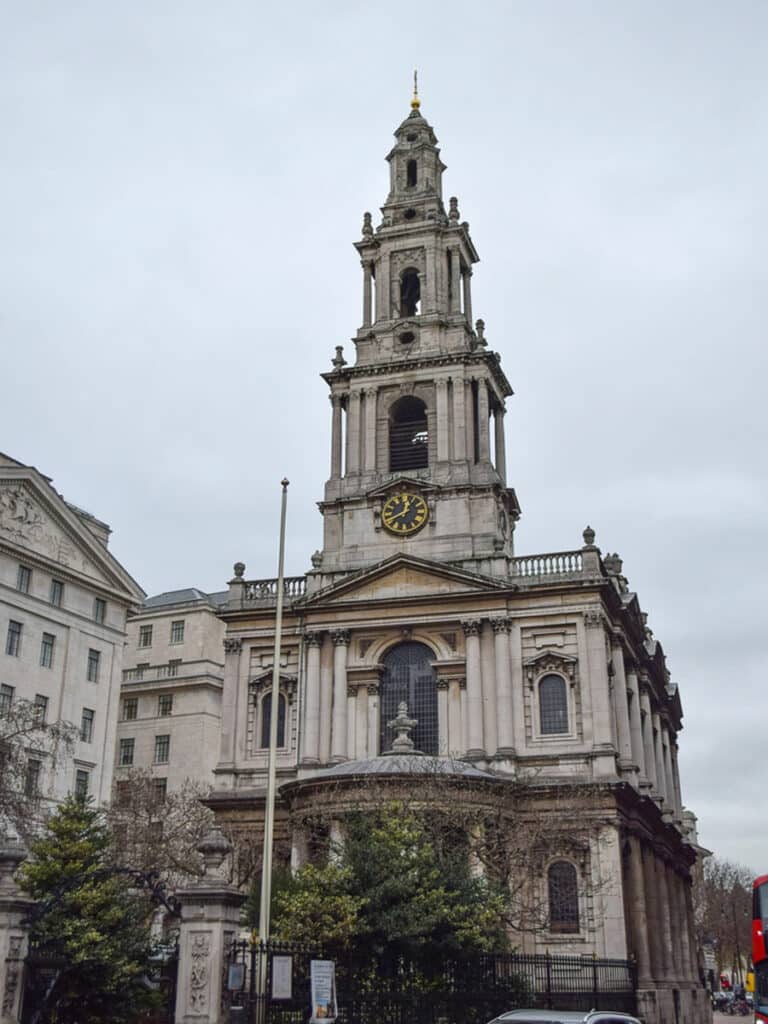
Another Wren church that was damaged during the Blitz is St Clement Danes in Westminster. It’s said to be the church in the nursery rhyme Oranges and Lemons, as in “say the bells of St Clements”, but St Clement’s in Eastcheap disputes that point.
This church also has a long history. It’s said that its name comes from the fact that when Danish settlers were given permission to live in London they chose the area around the church as their home and the church as their place of worship.
We do doubt the authenticity of such a story though, these things can never quite be confirmed. Though it does sound feasible enough, and pretty cool.
Old Royal Naval College
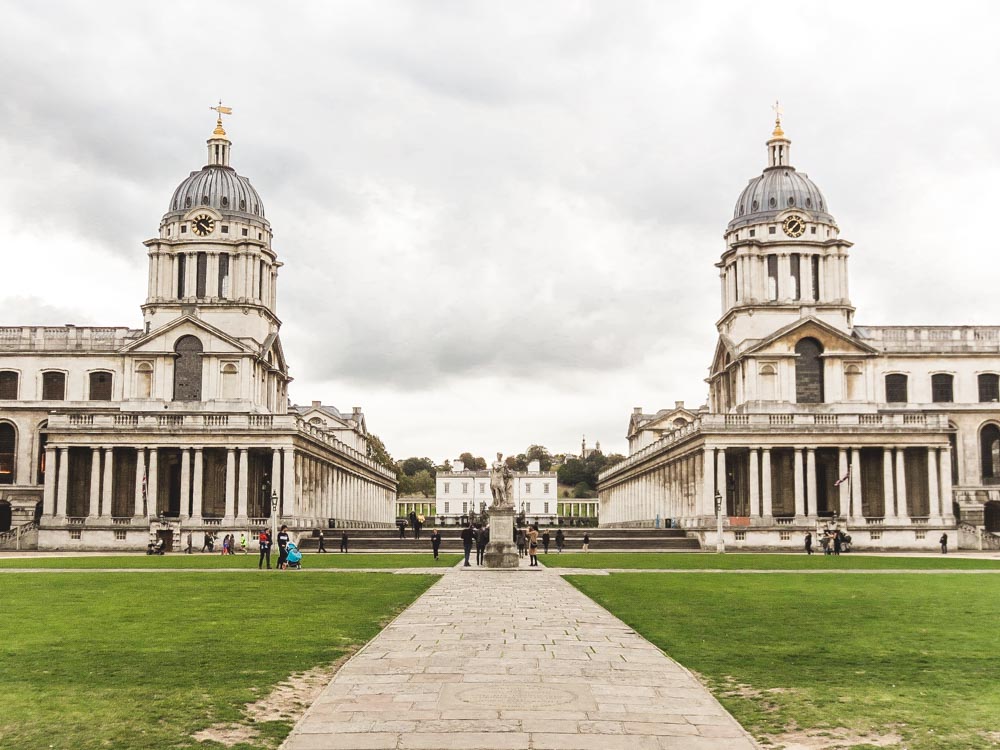
If you stand at the top of the hill by Greenwich Observatory and look down towards the river, you’ll see a series of grand sprawling buildings laid out at its bank. These are the halls of the Old Royal Naval College.
You may know them for the Painted Hall, the grand space where the naval cadets would dine and its grand painted ceiling depicting the grand rise of the English. Though Wren didn’t design the painting, the hall and surrounding buildings were all his doing.
When he started the works the place wouldn’t have been known as the ‘Old’ anything. It was a spanking new design for a space to educate naval officers that would go on to give Britain her power on the seas.
Nowadays you can visit as a tourist; the navy no longer trains there. Instead, you’ll find much of the space taken up by young people practising music.
Kensington Palace
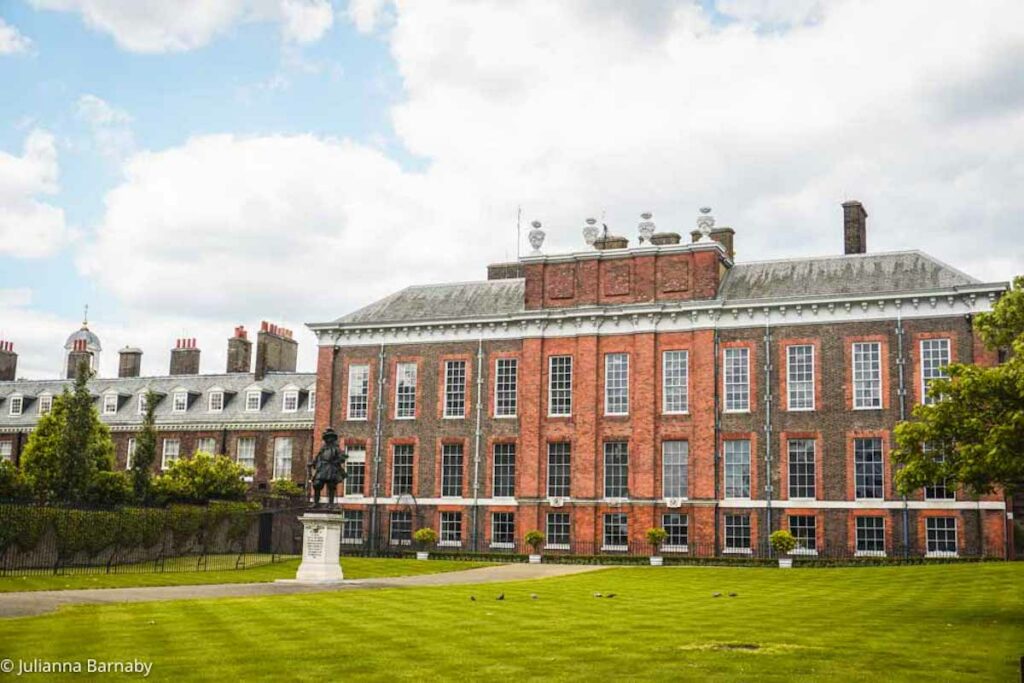
Famous now because Prince Harry moaned in his spill-all memoir that he had a rough time living there when people would park their SUVs in front of his basement window, Kensington Palace has a much more illustrious history than just being the setting for a few of Harry’s gripes.
The palace has been a second home to many an English monarch since its construction in 1605, but it was when King William the 3rd and Queen Mary the 2nd decided to give the palace a revamp that Wren got involved.
He added two pavilions on either wing to provide a bit of extra space for the couple’s guests to stay when the royal parties got a bit wild. He also added and designed the royal Orangery which functions as the palace’s greenhouse.
St. Dunstan’s in the East
The City of London
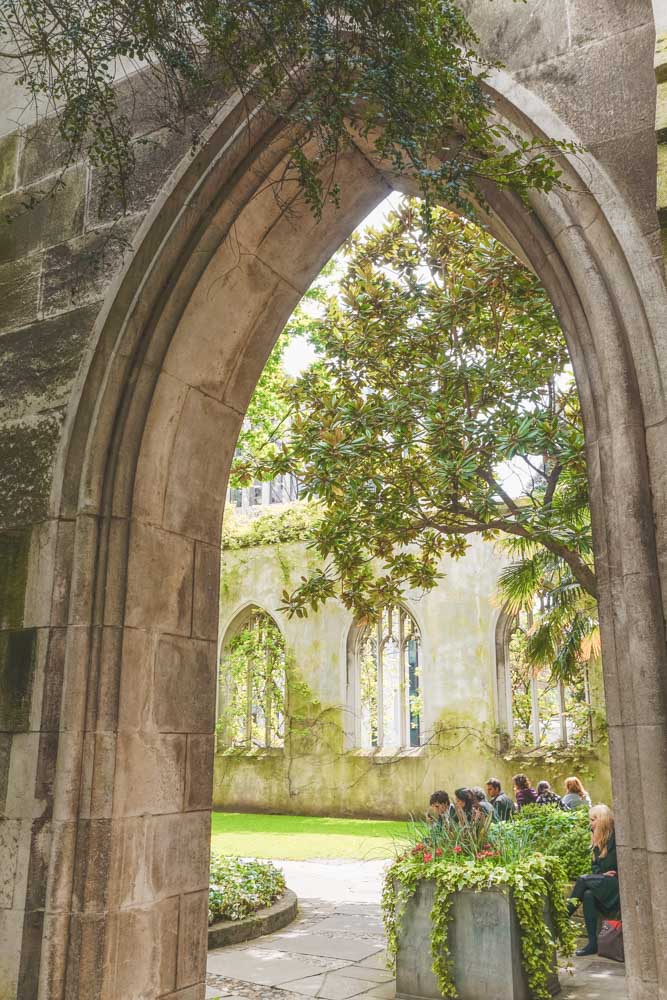
Here’s yet another church that follows our classic Wren tale of redesign after the Great fire and damage during the Blitz, except this one never recovered.
The beautiful gothic church was blown to smithereens by the Germans and what was left of the building was kept standing has been turned into a public garden.
Today you can nab a bench in a secluded part of the park and relax in the heart of the city. It’s a quiet spot for sure.
You can still see some of Wren’s work on the remaining tower and parts of the walls that didn’t come down during the bombings.
Temple Bar
Temple
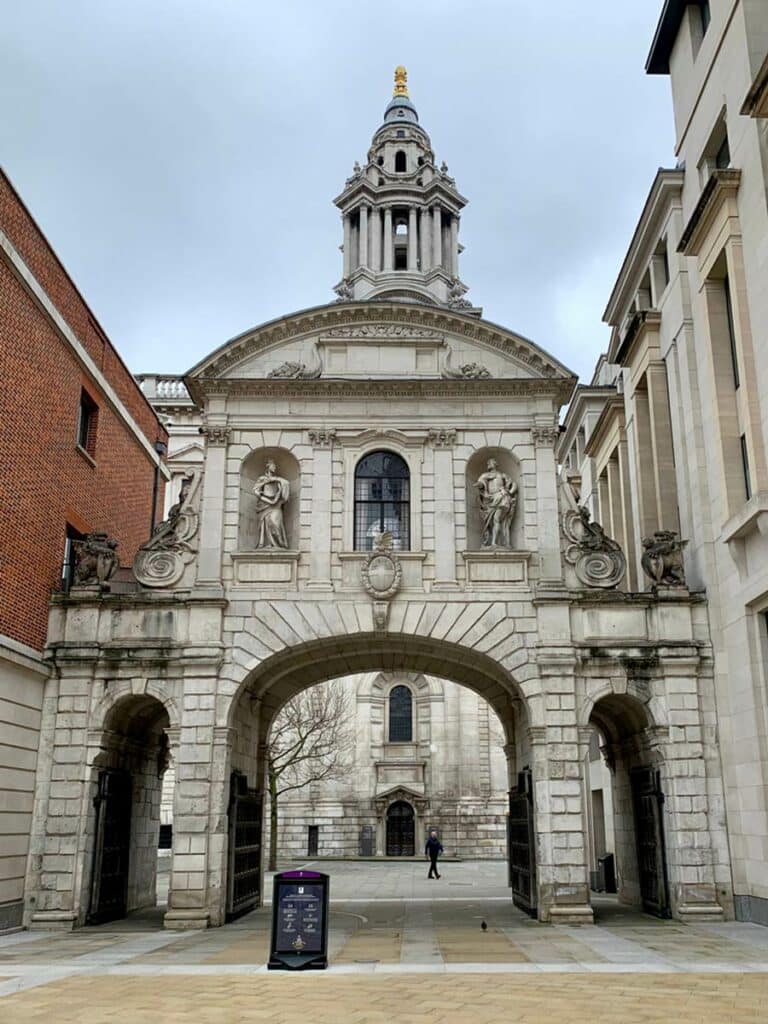
This old gatehouse has a curious bit of history, some of which probably occurred within your lifetime. Temple Bar was the old gates to the City of London. It was lost in the Great Fire and then can you guess who they got in to rebuild it?
Yep, our man Sir Christopher Wren. The gate is a grand entrance of three arches decorated with baroque sculptures and sporting a central gatehouse above the main arch.
It was back in 2003 however, that they decided Temple Bar had to be moved. It was no longer feasible to keep the gate in its position with the building of the Royal Courts of Justice and all the traffic that was passing through them.
They painstakingly took the gate apart and rebuilt it exactly the same in Paternoster Square.
Practical Tips for Exploring the Best Christopher Wren Buildings in London
- You may have to take a few days to see all of these buildings. Some of them, like Hampton Court Palace, are quite far out of London, and actually deserve a day to go and look around.
- For others, you’ll be able to walk between them with ease. St. Pauls, St. Martins and Temple Bar are all within walking distance. You could even take a boat down the river and visit the Royal Naval College and the Observatory on the same day.
- If you’re feeling like you want a bit of guidance, and maybe the informational stylings of a professional tour there are plenty to choose from. This one does a lap of some of Wren’s best-known churches. There are plenty that pop up on the internet on a rolling basis if you just google ‘Christopher Wren tour of London’ when you fancy doing one.

